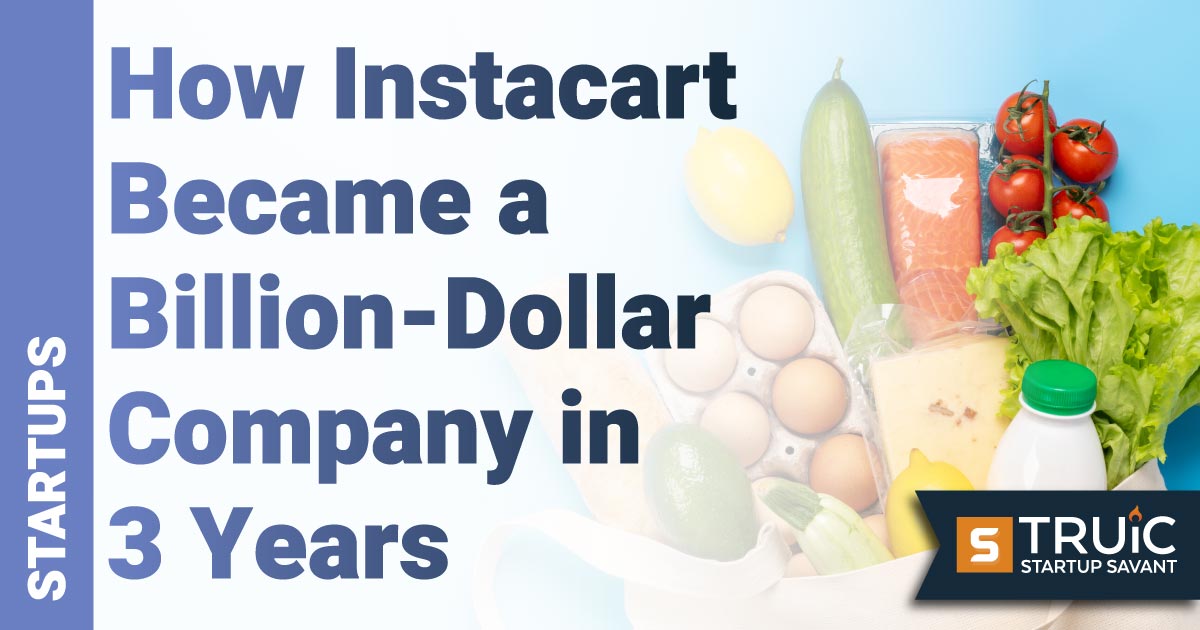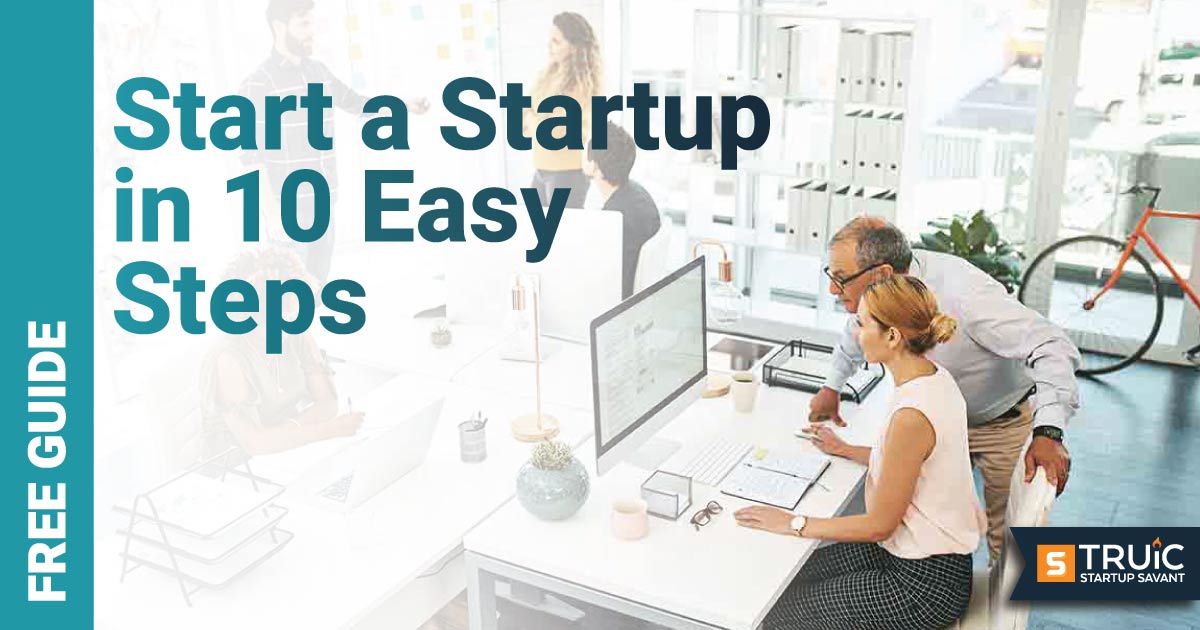How Instacart Became a Billion-Dollar Company in Three Years
The Origin Story of Food App Startup Instacart

Last Updated: By TRUiC Team
Instacart is a popular platform for people who want to get their groceries delivered and a success story for any entrepreneur who’s curious about how a business can scale so quickly. In just a few years, an aversion to shopping morphed into a billion-dollar company, a turnaround that could make anyone’s head spin. We look at the beginnings of the food app startup and how leaders made decisions that allowed it to thrive in such a competitive landscape.
Origin of the Startup Idea
While Instacart was technically founded by three people — Apoorva Mehta, Max Mullen, and Brandon Leonardo — it’s really Mehta at the heart of this story. There are a few core lessons and ideas that he absorbed in his early career. As an employee of Amazon, he saw how product delivery affected the status of the company. Speed, accuracy, and convenience weren’t just important to customers; they were the driving factors at the heart of the company’s revenue. The other aspect of Amazon's success was quality inventory. There needed to be enough options that a consumer felt they could find what they needed.
It’s worth noting that Instacart was not Mehta’s first startup idea, though — not by a long shot. In fact, he would try at least 20 other service ideas after leaving Amazon in 2010 before landing on a winner. In addition to having a strong educational foundation, it’s likely that all the trial and error had plenty to do with how he scaled so successfully.
As an engineer who moved from India to Canada at a young age, Mehta had an intense hatred for going to the grocery store, which would prompt him to create a service where people could order what they liked and then have it delivered. As the story goes, he vowed not to purchase any groceries until he could do so from his own app (even though it’s unclear what he ate in the meantime). In 2012, he was said to place an order, walk to the grocery store, and then deliver the order to himself. Hopefully, he also gave himself a tip and a five-star review.
Development of Startup
Instacart started as a basic service in the San Francisco area. It didn't have a marketing department, relying solely on word of mouth at the beginning. It wasn’t until his order count kept rising that Mehta had to puzzle over what it would take to scale. His solution was to hire a team of personal shoppers to ensure that orders could be fulfilled. He also wanted to capitalize on the buzz that his company was already picking up in the ultra-competitive world of Silicon Valley. In the summer of that year, he joined the Y Combinator incubator, where he met Mullen and Leonardo.
The incubator was where he took the platform to the next level, and his improvements caught the eye of those with deep pockets. He had seed capital by the end of the year, courtesy of Y Combinator, Canaan Partners, Semil Shah, Khosla Ventures, and Funders Club. The money allowed his team to further the company’s reach in his hometown of San Francisco and grow his employee roster to 200 by April 2015.
In June 2015, Mehta dabbled in the “gig economy.” He introduced a policy that allowed employees to work part-time in Chicago and Boston. In July 2015, he did the same for shoppers in Atlanta, Washington D.C., and Miami. This change resonated with anyone who wanted to control the hours they worked and the money they made. It tempted more people to try out the platform, which in turn helped Instacart fulfill more orders.
Instacart was able to scale not only because the idea was solid but because the company tapped the new needs of workers. Instead of dictating hours and quotas, Instacart made it possible for people to make extra money when they chose to. Mehta gave them a platform that worked, and the employees used it to receive orders, fulfill them based on supply, and deliver them on time to customers.
The other major reason why Instacart was able to scale was that the demand was already built-in. With people leading busy lives in an even busier city, there was hardly a lot of spare time to wait in line. Instacart also made it possible for people to check their inventory right before ordering, so they didn't duplicate an item. For those with mobility challenges, it was even more valuable.
What’s Next for the Startup
Instacart today offers 24/7 delivery in most major cities, a feat that may have seemed unimaginable for Mehta not more than a decade ago. This is all part of a trajectory that the company has been on for years now. The startup seems destined to continue pushing boundaries on how consumers receive necessities, including everything from weekly groceries to convenience store treats. In some states, the company can even deliver liquor.
This company grew during the early days of the pandemic when everyone was advised to avoid public encounters. Now, Instacart can deliver items in as little as half an hour via the platform. Order minimums are likely to remain low, with an option to pay a fee for smaller orders. Instacart will also retain its offers, such as allowing new customers free delivery on their first order, as well as a loyalty program that encourages people to use the platform rather than competitors.
Next Steps:
- Listen to interviews with industry-disrupting founders on the Startup Savants podcast.
- Learn more business strategies or get inspired with our list of the top startups to watch!
- Start your own startup by reading our How to Start a Startup guide.
Tell Us Your Startup Story
Are you a startup founder and want to share your entrepreneurial journey withh our readers? Click below to contact us today!


